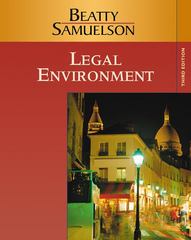Question
Here is the link to the Ezra Klein Show podcast with Mehrsa Baradaran.Ezra Klein runs vox.com.Baradaran is a law professor at Cal Irvine who specializes
Here is the link to the Ezra Klein Show podcast with Mehrsa Baradaran.Ezra Klein runs vox.com.Baradaran is a law professor at Cal Irvine who specializes in banking. If you are searching for this on another podcast platform, the show is called "Political Power and the Racial Wealth Gap" and was first aired in May, 2018.
https://www.vox.com/2018/5/29/17394864/ezra-klein-show-book-recommendations-mehrsa-baradaran-the-color-of-money-racial-wealth-gap
14.After the ads, about 20:30, Klein asks how the credit system can lock people out of the ability to accumulate wealth.What are two examples of how the government through Federal policy extended credit to white citizens but not black citizens?Was this a laissez-faire policy or the visible hand of the government assisting the invisible hand of the market? (4 points)
15.About 27:00, they start discussing the power of free-market, supply-and-demand economics to promote the idea that African-Americans deserve to be poor.Why do other groups who also faced discrimination such as the Irish or Chinese or the Jews manage to escape that discrimination and build wealth while the African-American community did not?Was this something inherent in the cultures of these communities, or was it a result of active policy choices? (4 points)
16.Here is another question although referred to in the podcast you'll probably have to look up.What was "Redlining?"What street in Kansas City is commonly used to illustrate where this Redlining occurred here?(Hint:East of this street African-Americans were encouraged to live, but west of it they were denied Federal Mortgage guarantees.) (4 points)
17.About 35:15 they begin discussing how some forms of help seem 'natural' and some 'unnatural.' Baradaran then discusses the difference between zero-sum thinking and non zero-sum thinking.How has this difference affected the way our society has responded to the opioid crisis in rural white communities compared to the crack-cocaine crisis which ravaged African-American communities?The discussion of this runs to about 41:00 (4 points)
18.About 41:15 they begin discussing why it can be economically rational for white homeowners to want to exclude African-Americans from their neighborhoods. Describe the feedback loop or process that can lead to people Baradaran describes as "otherwise not racist" who nonetheless find it in their economic self-interest to exclude blacks from their neighborhoods. (4 points)
Discussion 3:How expensive is it to be poor?
About 54:45 They discuss how expensive it is to be poor.
19.What is one example Klein gives of how it is more expensive to be poor? (2 points)
20.What is one example Baradaran gives of when she saw first-hand of how expensive it is to be so poor you don't have access to banking services? (2 points)
https://www.vox.com/2018/5/29/17394864/ezra-klein-show-book-recommendations-mehrsa-baradaran-the-color-of-money-racial-wealth-gap
listen to the podcast and answer all the questions on the top.
Step by Step Solution
There are 3 Steps involved in it
Step: 1

Get Instant Access to Expert-Tailored Solutions
See step-by-step solutions with expert insights and AI powered tools for academic success
Step: 2

Step: 3

Ace Your Homework with AI
Get the answers you need in no time with our AI-driven, step-by-step assistance
Get Started


